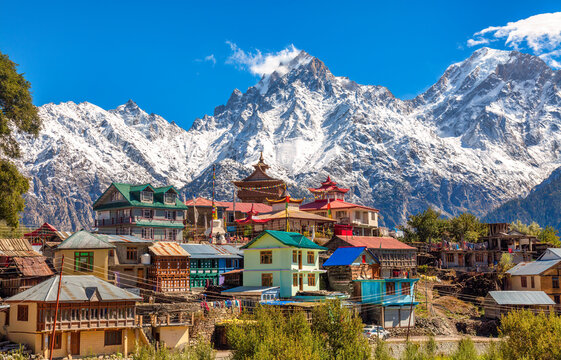¤ 10+ minutes Read
Kasauli
A complete tourist and cultural guide
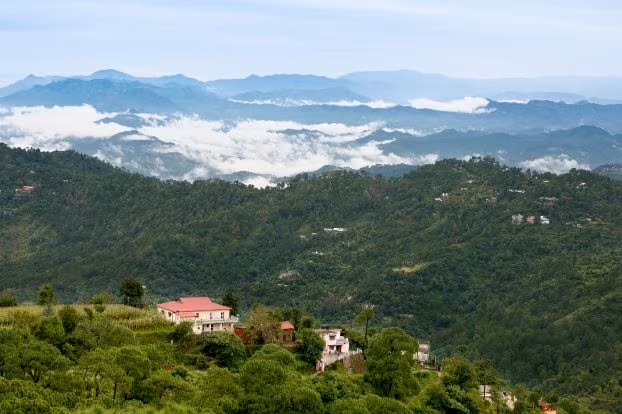
Kasauli, a tranquil hill station in Himachal Pradesh, is a destination for those seeking peace and natural beauty. Established during the British Raj, it is known for its colonial architecture, winding walking trails, and panoramic views of the Shivalik ranges. It offers a perfect blend of history, serenity, and mountain tradition that provides a refreshing escape for visitors.
Wiki Link: Kasauli wiki page
Must-Visit Attractions in Kasauli
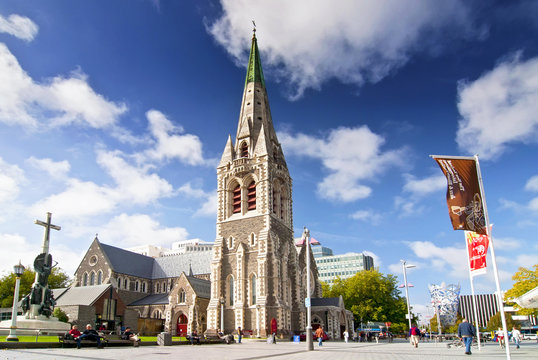
Christ Church
One of the oldest churches in Himachal Pradesh, built in 1853, it features neo-Gothic architecture and stained-glass windows, offering a peaceful ambiance.
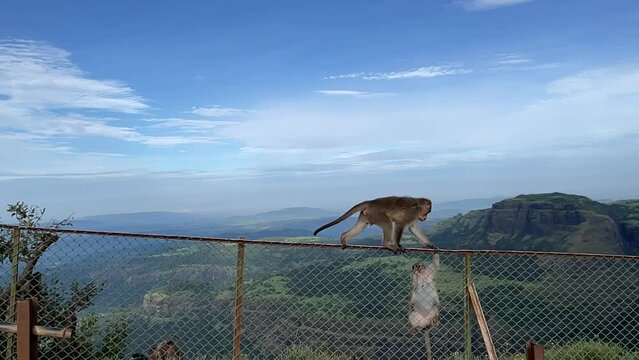
Monkey Point
The highest point in Kasauli, home to a ancient Hanuman temple and offering breathtaking panoramic views of the Sutlej River and the surrounding plains.

Gilbert Trail
A serene, paved walking path flanked by dense forests and oak trees, perfect for a gentle stroll while listening to birdsong and enjoying the cool mountain air.

Kasauli Brewery
One of the oldest distilleries in Asia, established in the 1820s. While often not open to the general public for tours, its history is a notable part of the town’s colonial legacy.
Major Attractions Nearby Kasauli

Shimla
The capital city of Himachal Pradesh, known for its historic Mall Road, the Ridge, and colonial architecture, is just a short drive away.
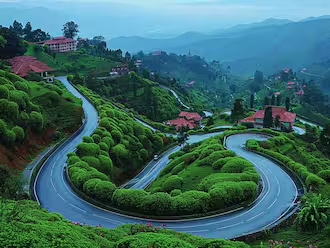
Kasauli to Solang Valley
While a longer drive, Solang Valley near Manali offers adventure sports like paragliding, zorbing, and skiing, providing a thrilling contrast to Kasauli’s calm.

Bhakra Nangal Dam
One of the tallest gravity dams in the world, located on the Sutlej River, is an impressive feat of engineering and offers spectacular views.
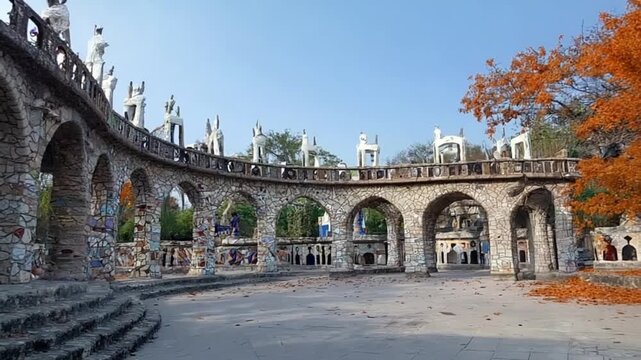
Chandigarh
The beautifully planned city by Le Corbusier, known for its Rock Garden, Rose Garden, and Sukhna Lake, serves as the common gateway to Kasauli.
Things to do in Kasauli
Experience the serene, slow-paced, and natural essence of this hill station. From leisurely walks to enjoying local treats, Kasauli offers a rejuvenating mountain journey.
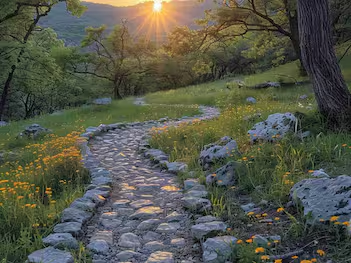
Heritage Walks
Stroll along the quiet Mall Road, explore the cobbled lanes, and admire the well-preserved colonial-era bungalows and gardens.

Sunset & Bird Watching
Head to Monkey Point or Sunset Point for spectacular views and bring your binoculars for spotting a variety of Himalayan birds.

Eat Maggi & Sip Chai
No hill station visit is complete without enjoying a plate of Maggi noodles and a cup of steaming chai from a local stall with a view.

Nature Meditation
Find a quiet spot along Gilbert Trail or in your hotel garden to practice yoga or meditation amidst the sounds and sights of nature.
The Performing Art of Kasauli
Kasauli’s cultural scene is a subtle reflection of Himachali traditions, influenced by its colonial past. The town is more about serene soundscapes than bustling performances—the melody of temple bells, folk songs from nearby villages, and the rustling of pine trees. During festivals, the local Pahari culture comes alive with music and dance.

Pahari Folk Music
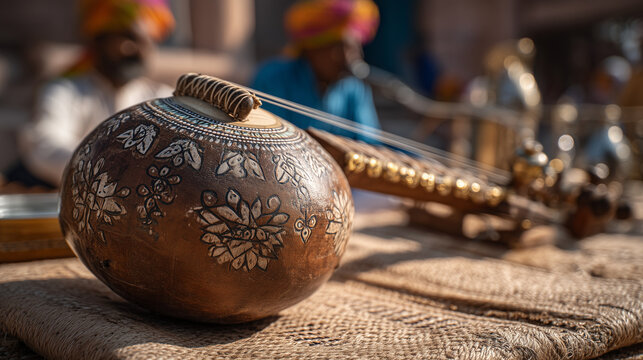
Devotional Songs

Classical & Ghazals
The Kasauli region is a serene sanctuary for the soulful folk music of the Himalayas, with the surrounding state of Himachal Pradesh nurturing its unique acoustic identity. While not home to formal gharanas, the area is deeply influenced by the vibrant traditions of the hills. The devotional rhythms of temple music and the melodic Pahari folk songs provide a constant, gentle soundtrack to daily life. Folk music, including the seasonal Jhoori and vibrant Jhanjhoti styles, tells tales of love, nature’s beauty, and the daily life of the mountain people.

Nati
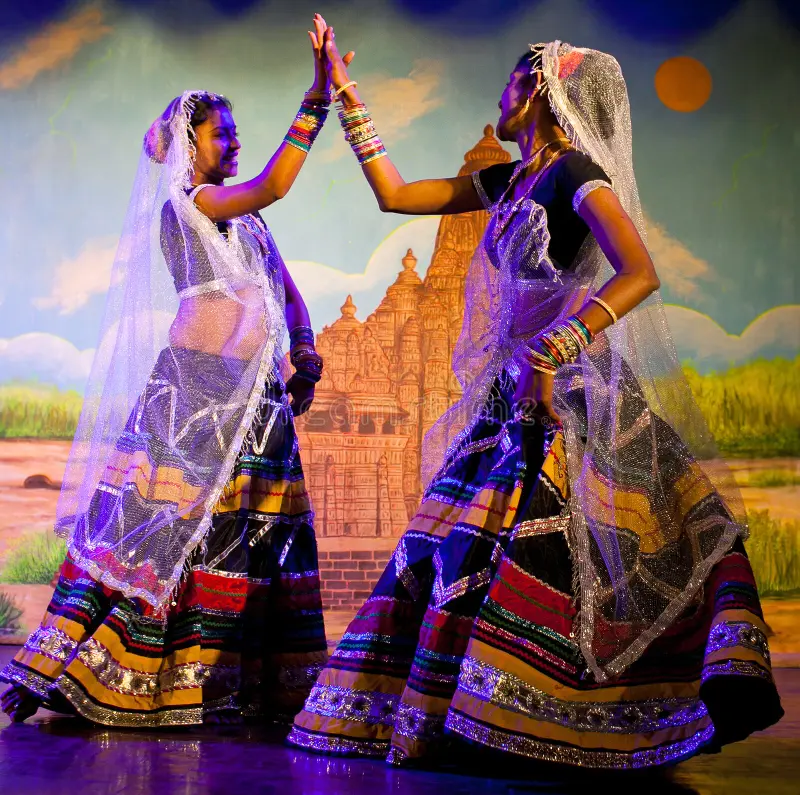
Jhanjar
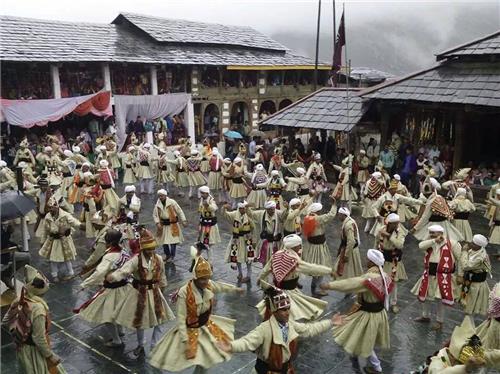
Chamba
Nati is the most iconic and widely performed folk dance of Himachal Pradesh, known for its joyful, circular formations and energetic movements. While its origins are rooted in the tribal traditions of the state, it is a celebrated part of the cultural fabric in regions like Kasauli, especially during local fairs and festivals like Dussehra. The state also celebrates vibrant folk dances like Jhanjar, characterized by its graceful swaying and rhythmic clapping, and Chamba, which is performed during harvest celebrations and other joyous occasions.
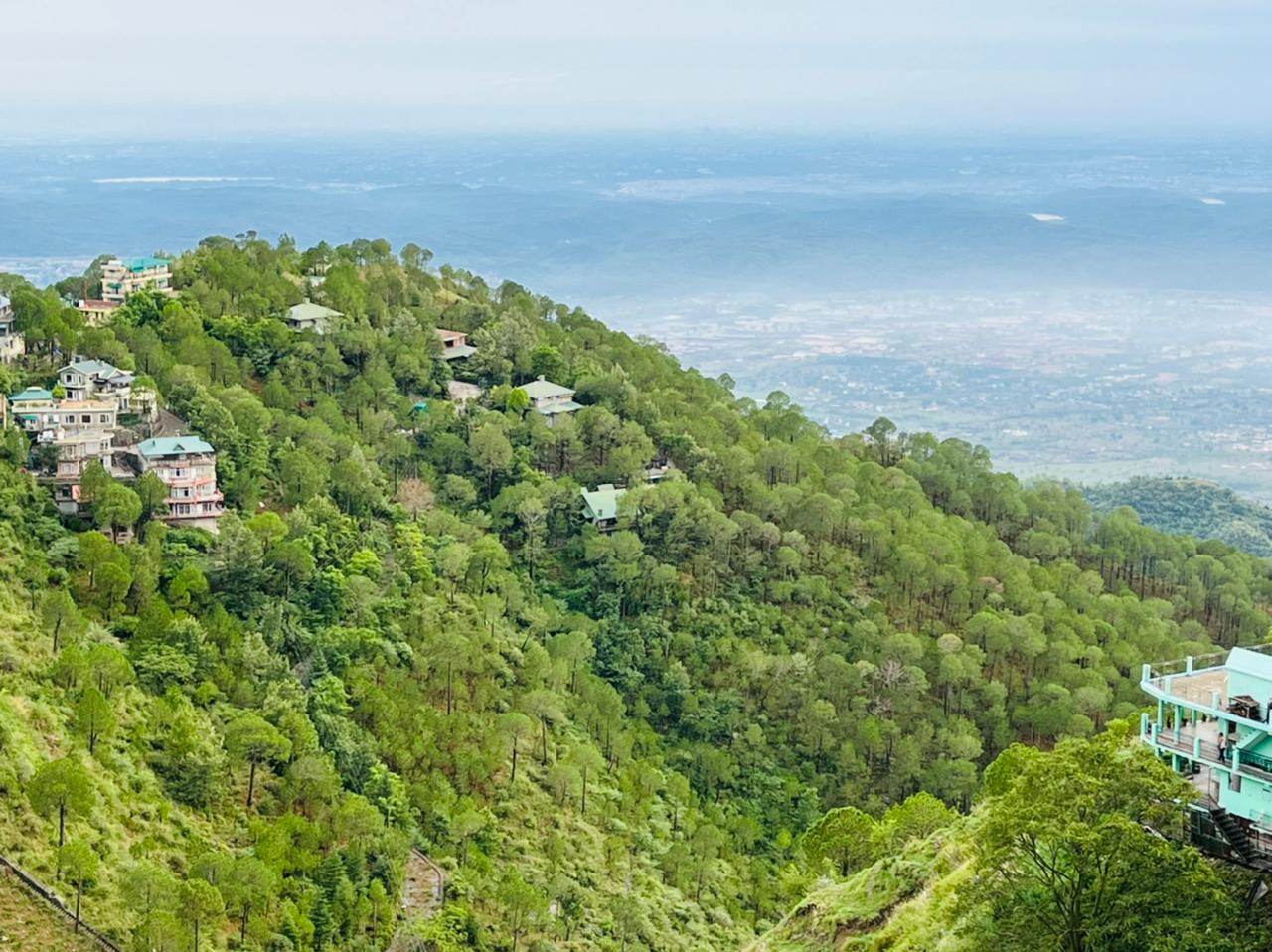
City Vibes - A Quaint Mountain Retreat
Kasauli exudes an aura of timeless tranquility. Its essence lies in the unhurried rhythm of life—the morning mist clearing to reveal sun-drenched hills, the leisurely walks on pine-scented trails, and the cozy evenings by a fireplace.
It’s a place where colonial history whispers from its architecture, and the simple pleasures of mountain life are celebrated.
Heritage of Kasauli
Kasauli’s heritage is deeply rooted in its history as a British Raj-era hill station. Established as a sanitarium, its legacy is preserved in its Gothic and Victorian architecture, such as the Christ Church and the old-world bungalows with their charming facades and lush gardens. The town’s planned layout and walking trails continue to reflect its colonial past.
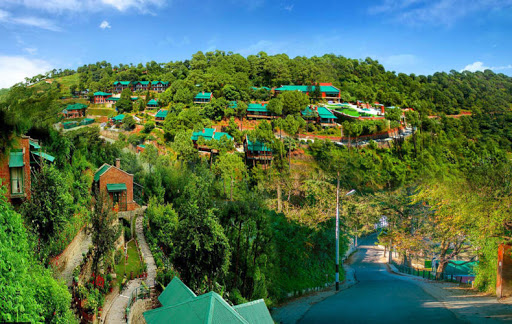
Cuisine of Kasauli
Kasauli offers a comforting mix of Himachali delicacies and familiar North Indian food, with a special focus on warm, satisfying snacks.
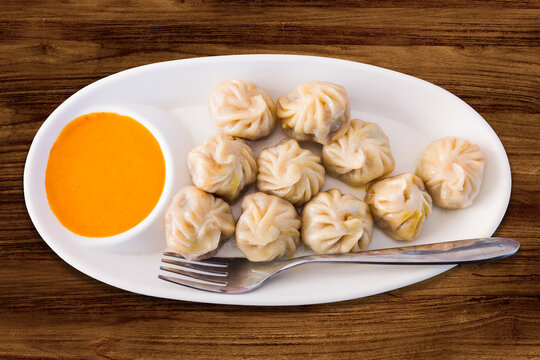
Momos
Steamed or fried dumplings filled with vegetables or meat, a ubiquitous and beloved mountain snack.

Rajma Chawal
A simple, hearty, and classic comfort food consisting of red kidney bean curry served with steamed rice.

Sidu
A traditional Himachali wheat bread, stuffed with a mixture of spices and walnuts, slow-cooked and served with ghee and dal.

Babru
A local variant of kachori, where black gram paste is stuffed in dough and deep-fried, often served with tamarind chutney.
Shopping in Kasauli
Shopping in Kasauli is a low-key affair, focused on local handicrafts and natural products that make for perfect souvenirs.

Honey & Fruit Preserves
Local honey and homemade jams (like apricot and plum) are pure, natural, and delicious takeaways from the hills.

Wooden Crafts
Intricately carved wooden trinkets, boxes, and decorative items that showcase the region’s craftsmanship.

Woolens
Hand-knitted sweaters, socks, caps, and shawls, perfect for the chilly mountain weather.

Herbal Products
Soaps, oils, and teas made from local herbs, offering a touch of Himalayan wellness.
Tourist's Handbook
The best time to visit Kasauli is from March to June, when the weather is pleasant and ideal for sightseeing, and from September to November, when the skies are clear and the views are stunning. Winters (December-February) are cold and snowy, perfect for those who enjoy the chill.
Stay Aware on Trails – The walking trails and paths can be steep and uneven; wear sturdy, non-slip footwear and be cautious, especially during early morning or late evening walks.
Beware of Monkeys – Monkeys can be aggressive and may snatch food, bags, or shiny objects; avoid carrying plastic bags openly and do not feed them.
Avoid Late-Night Solo Walks – Stick to well-lit areas like the Mall Road after dark, as the terrain is hilly and streets can be quiet and poorly lit.
Respect Local Customs – Dress modestly, especially when visiting temples and churches, and always ask for permission before taking photographs of local people or their property.
Check Weather Conditions – Mountain weather can change rapidly; check forecasts before heading out for walks or viewpoints to avoid being caught in rain or thick fog.
Navigating Kasauli is best done on foot due to its compact size and scenic trails. Auto-rickshaws are the most common mode of transport for shorter distances between points. For more flexibility and longer trips, such as visiting nearby attractions, hiring a local cab for a few hours is ideal and convenient. The core market area and heritage zones are pedestrian-friendly, and exploring them on foot is the best way to truly experience the town's old-world charm and tranquility.
Overpriced Taxi Rides – Always negotiate and agree on taxi fares for local sightseeing in advance.
Fake Guides – Use only licensed guides recommended by your hotel or reputable tour operators.
Overcharging for Rooms – During peak season, some private guesthouses may inflate prices; book through recognized platforms or insist on seeing the room first.
"Special Access" to Attractions – Access to most points like Monkey Point is public and free; avoid anyone offering "special entry" for a fee.
Fake Local Products – When buying local honey or handicrafts, be cautious of inflated prices and fake goods; prefer government emporiums or established shops.
Kasauli Blogs
- Himachal Pradesh Travel Guide
- Places to visit in Kasauli
- Places to visit nearby Kasauli
- India’s most peaceful mountain getaways
Recommended articles
- Himachal Pradesh Travel Guide
- Places to visit in Kasauli
- Places to visit nearby Kasauli
- India’s most popular destination

